Andrew Cope‘s scratch built Springer model
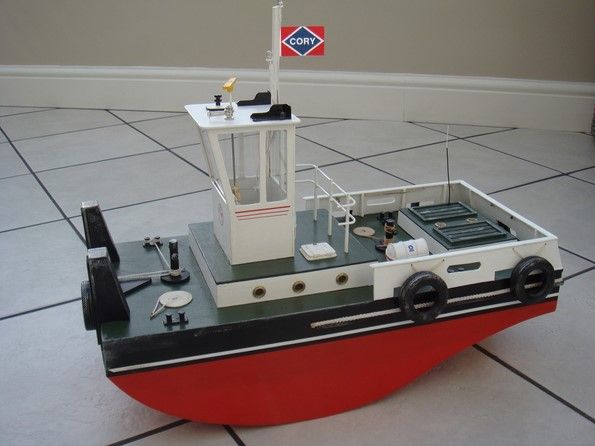
I’m not claiming to know a whole lot about tugs and in truth I don’t know the strict difference between a Pusher Tug and a Springer Tug, but I do enjoy scratch building models and this has to be about the easiest of the type to build. This variety of tug appears to be very popular and having built and sailed two of them, I can really see their attraction as it’s a cheap robust model that can shove a barge or football around the pond with no fear of damage to itself. These model tugs are always fun to sail on their own, or you can challenge your club-mates to a pushing or pulling competition for a bit of fun.
Kits
Enjoy more Model Boats Magazine reading in the monthly magazine.
Click here to subscribe & save.
There are plastic vac-formed and wooden kits available for this type of model, but I reckon you can build one for half the price of a kit and achieve twice the quality if you are prepared to source your own materials and build from a simple plan. The level of detail and total cost is down to you, but the real attraction is that it is a cheap and quick-to-build robust model boat that you won’t mind bashing into things, as after all it is really just a glorified wooden box.
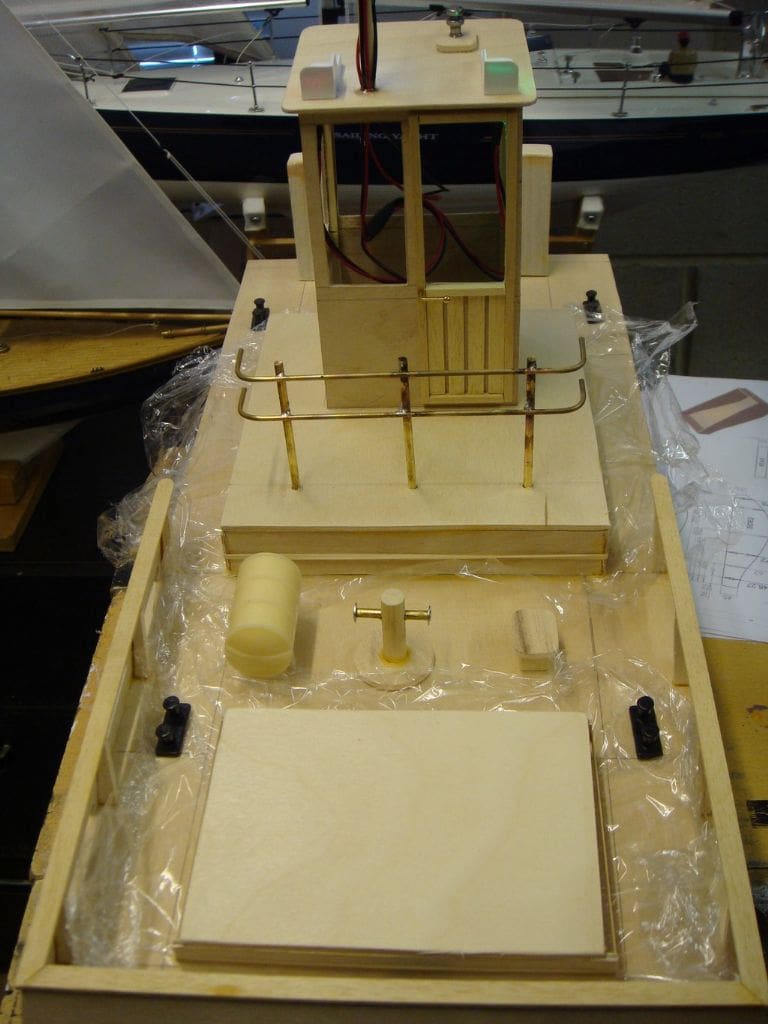
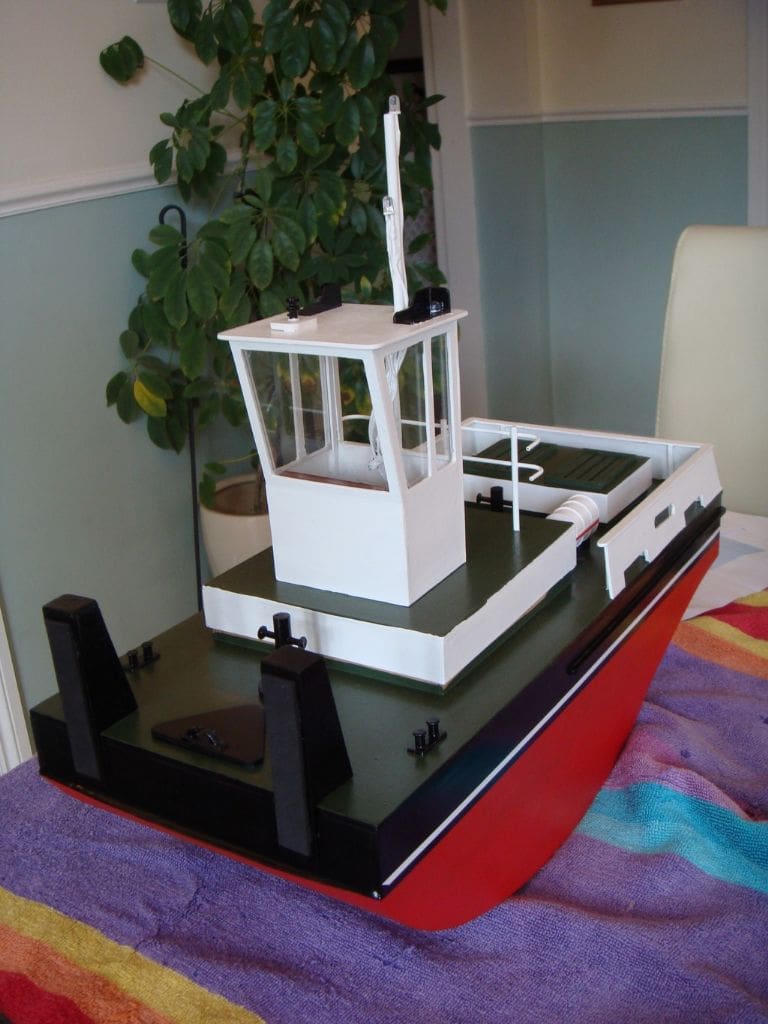
A plan?
We all need a plan and you can’t really do without this, so I just sat down with a piece of plain paper one evening and sketched the outline, largely guessing and scaling the dimensions from pictures of such models found on the Internet. This in due course became a reasonably sized model that is 450 x 250mm (18 x 10 inches), plenty big enough without becoming so large that you need half a ton of lead to ballast it, but trust me, you will still need a surprisingly large amount of weight to sink this design of hull down to its waterline.
Whether by luck or judgement, this homegrown plan produced a hull that performs very well indeed, as long as one get’s as much angular throw as possible on the rudder. It will then practically turn on the spot if you get that just right. The plan is reproduced, gratis, in this magazine and you can either have it enlarged or just take the written measurements from the plan and transfer them to your pieces of wood.
The plan doesn’t include every component or detail of the superstructure and fittings, but if you are able to cut and glue together the parts as shown, I’m confident that you’ll be so close to final completion that you’ll be motivated to finish it all as quickly as possible.
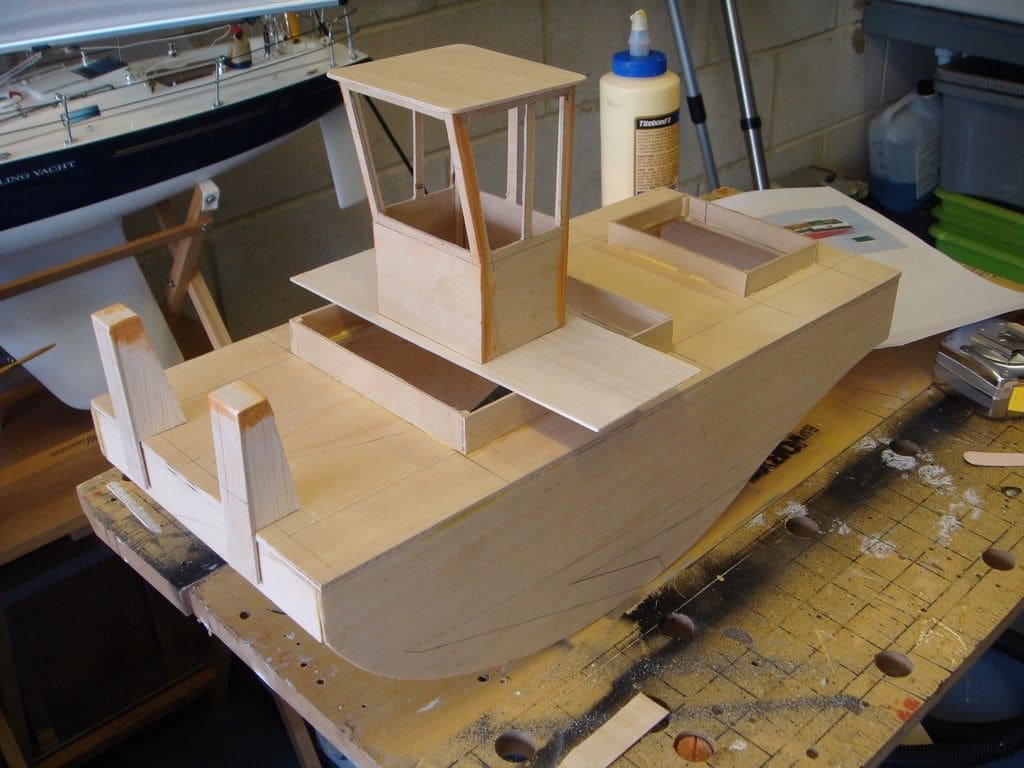
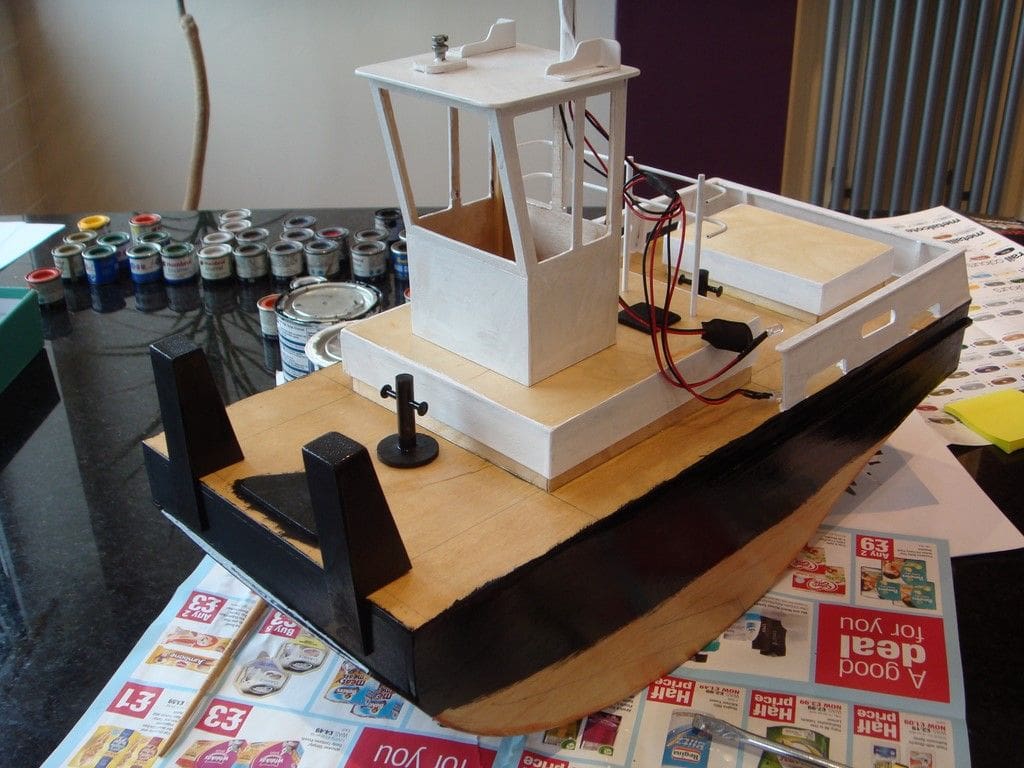
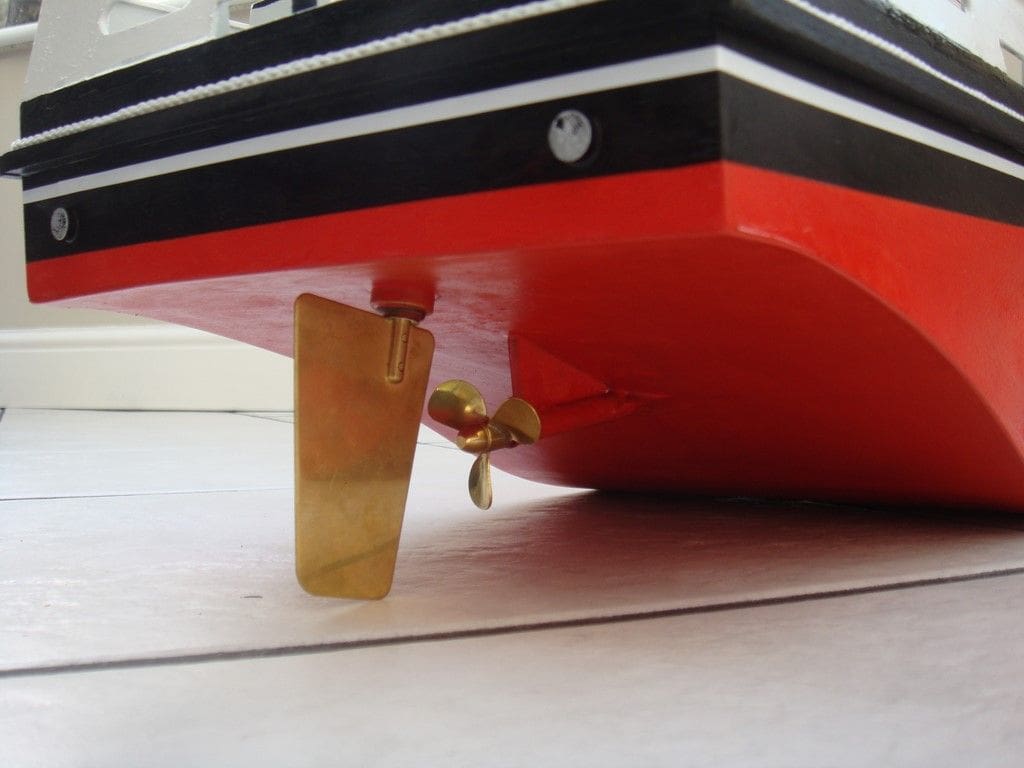
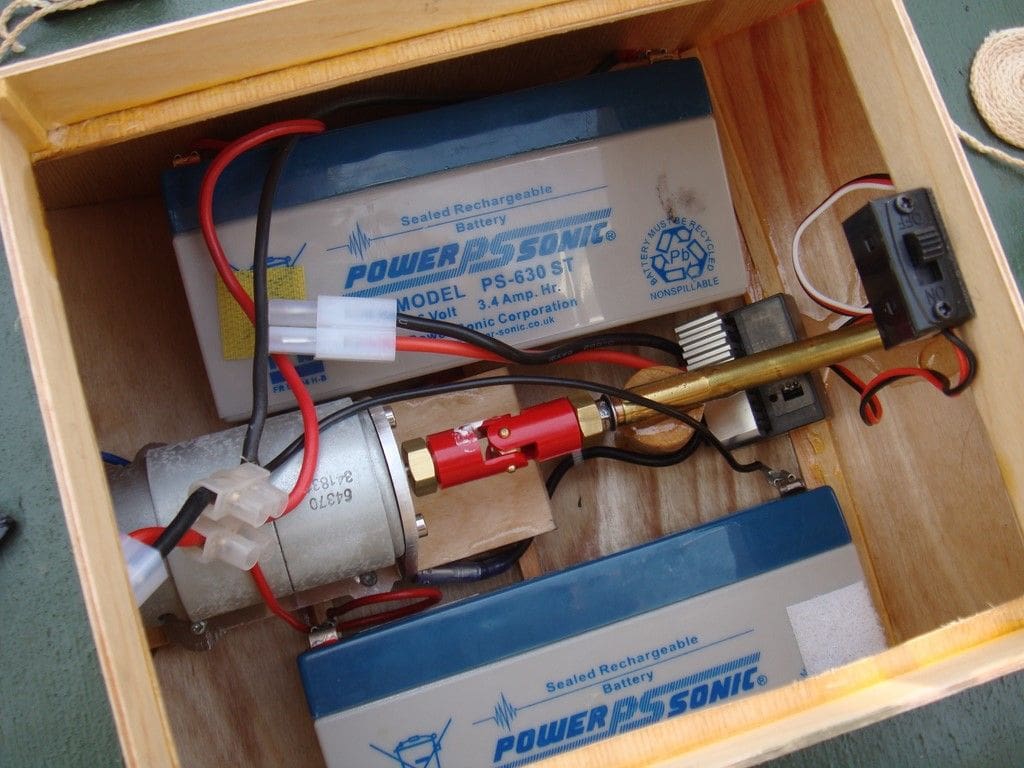
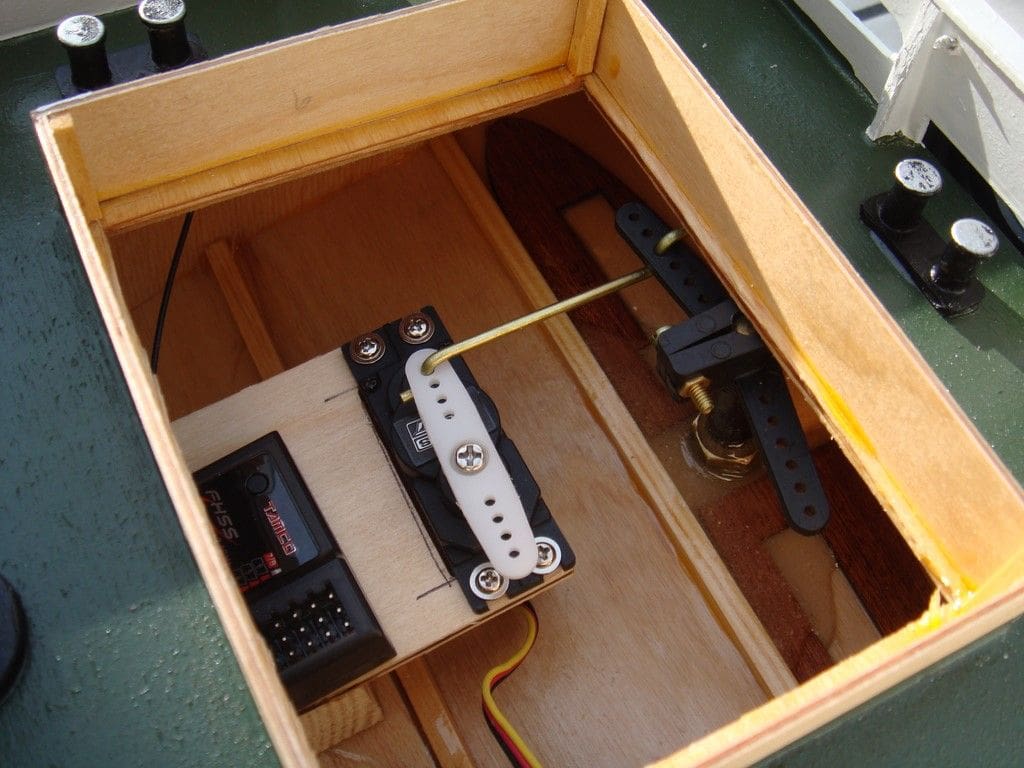
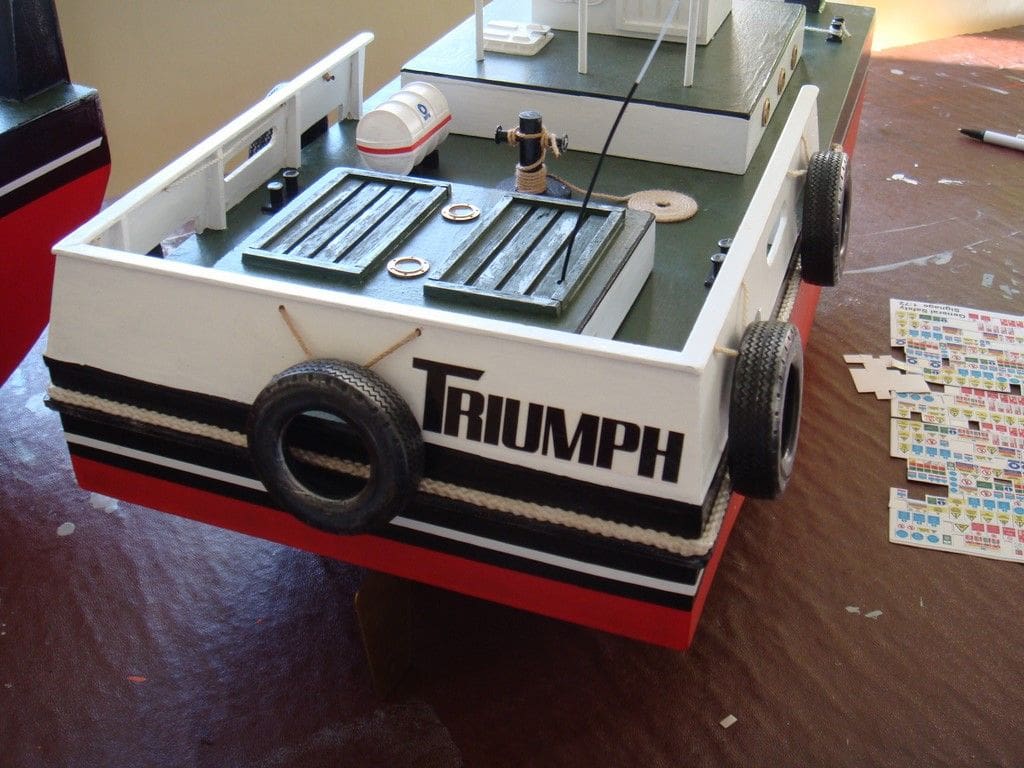
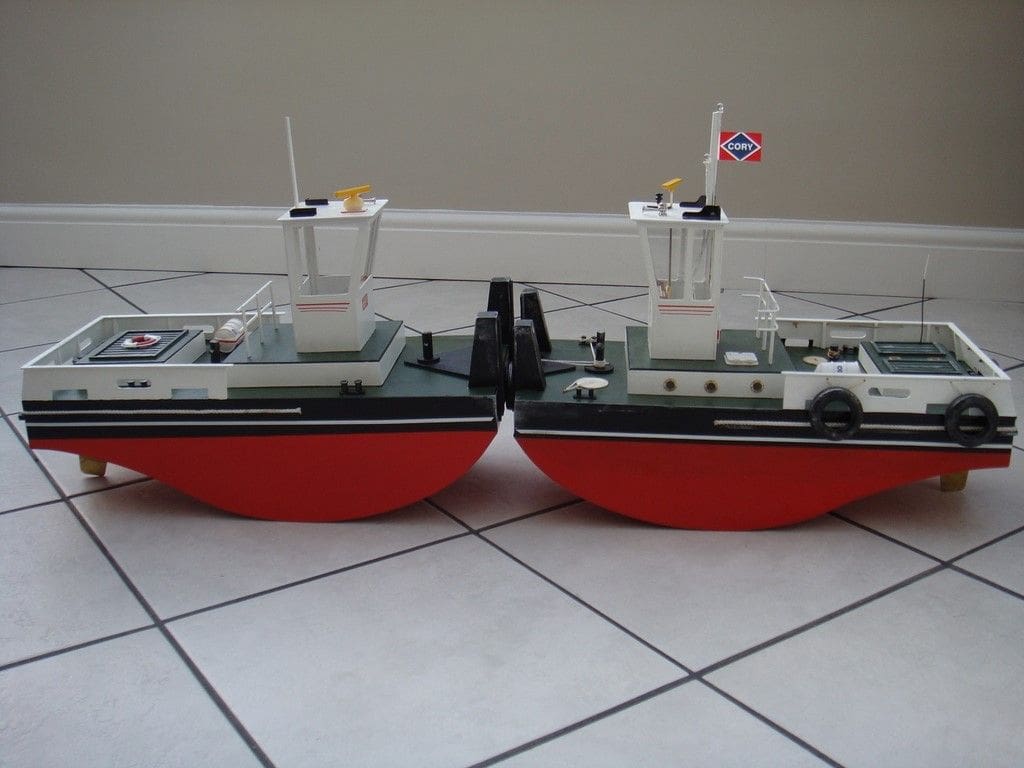
Materials
There are plenty of options for these, but I used 4mm Birch plywood for the deck and hull sides and virtually everything else was 2mm ply or balsawood. 2mm plywood easily bends to the shape of the hull bottom to create the distinctive shape and standard PVA wood glue is easy enough to use, being a perfectly adequate adhesive for the job in hand.
Driveline
A Johnson 600 brushed motor and 5 inch propshaft tube with a 6.5 inch shaft driving a 35mm brass propeller, together with a standard pre-fabricated large brass rudder proved ideal for the running gear.
Battery and electronic speed controller (esc) choices are of course endless, but a cheap 1:10 scale buggy esc from that well known internet auction website and two sealed lead acid house intruder alarm batteries provide the power source. These batteries sit nicely either side of the propshaft adding to the ballast. However, some additional pieces of lead-flashing were still needed for this, as the hull is one big box that is also quite difficult to sink, as it so happens.
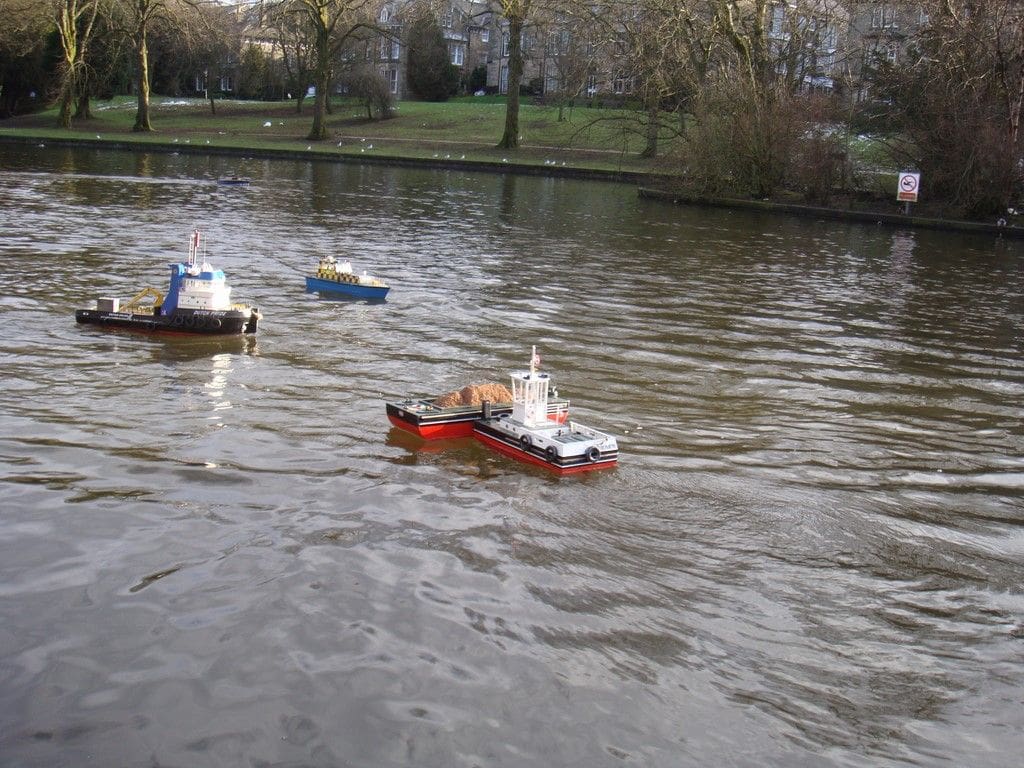
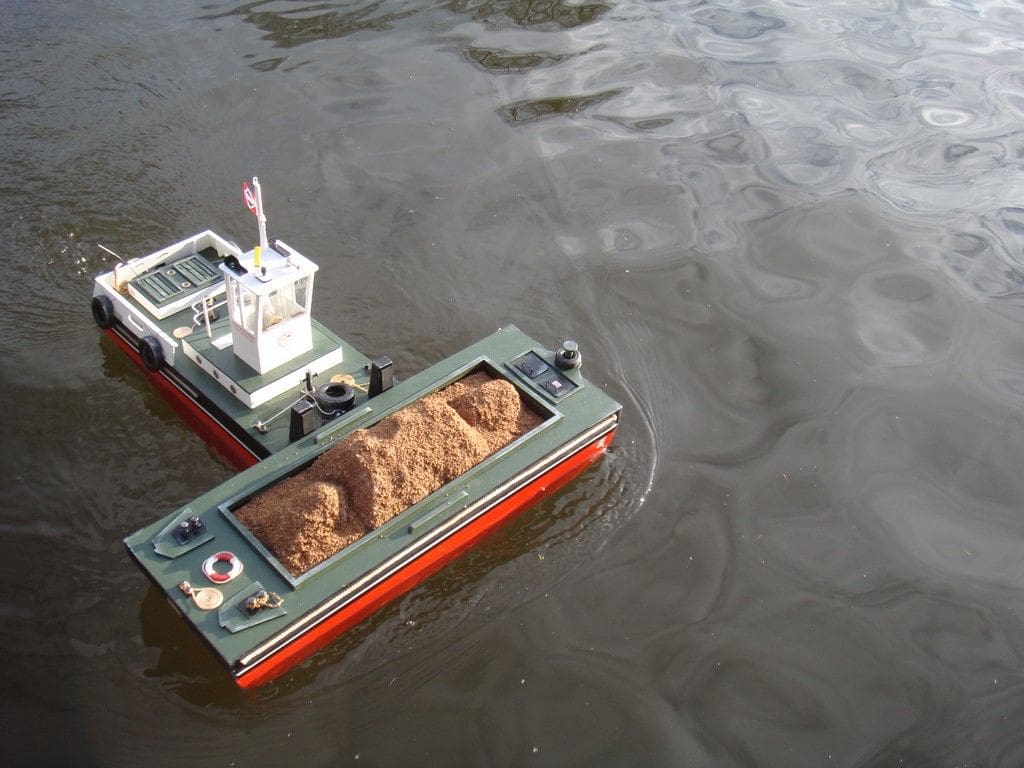
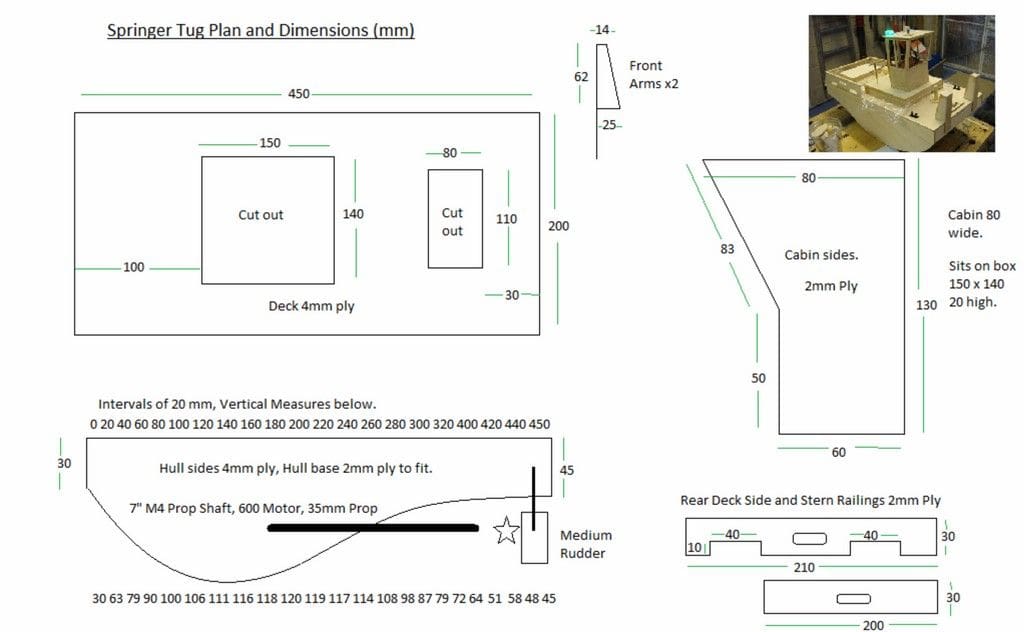
Conclusion
Hopefully the captioned pictures tell the key elements of the construction story and I hope someone will be inspired enough to use the plan, suitably enlarged to whatever size they desire. Mind you, has anyone built a miniature version yet?
A short video of the construction and the finished models are on YouTube, please search for Buxton Model Boat Club, Videos 37 and 38, or please visit my club’s website: www.buxtonmodelboatclub.co.uk, which has all the relevant club information and contacts.
The club operates on the Pavilion Gardens Pond on Thursdays and Sundays (0900hrs to 1200hrs), set within the Victorian Gardens in the Spa Town of Buxton in the Peak District, Derbyshire.
Enjoy your hobby – Andy Cope.



